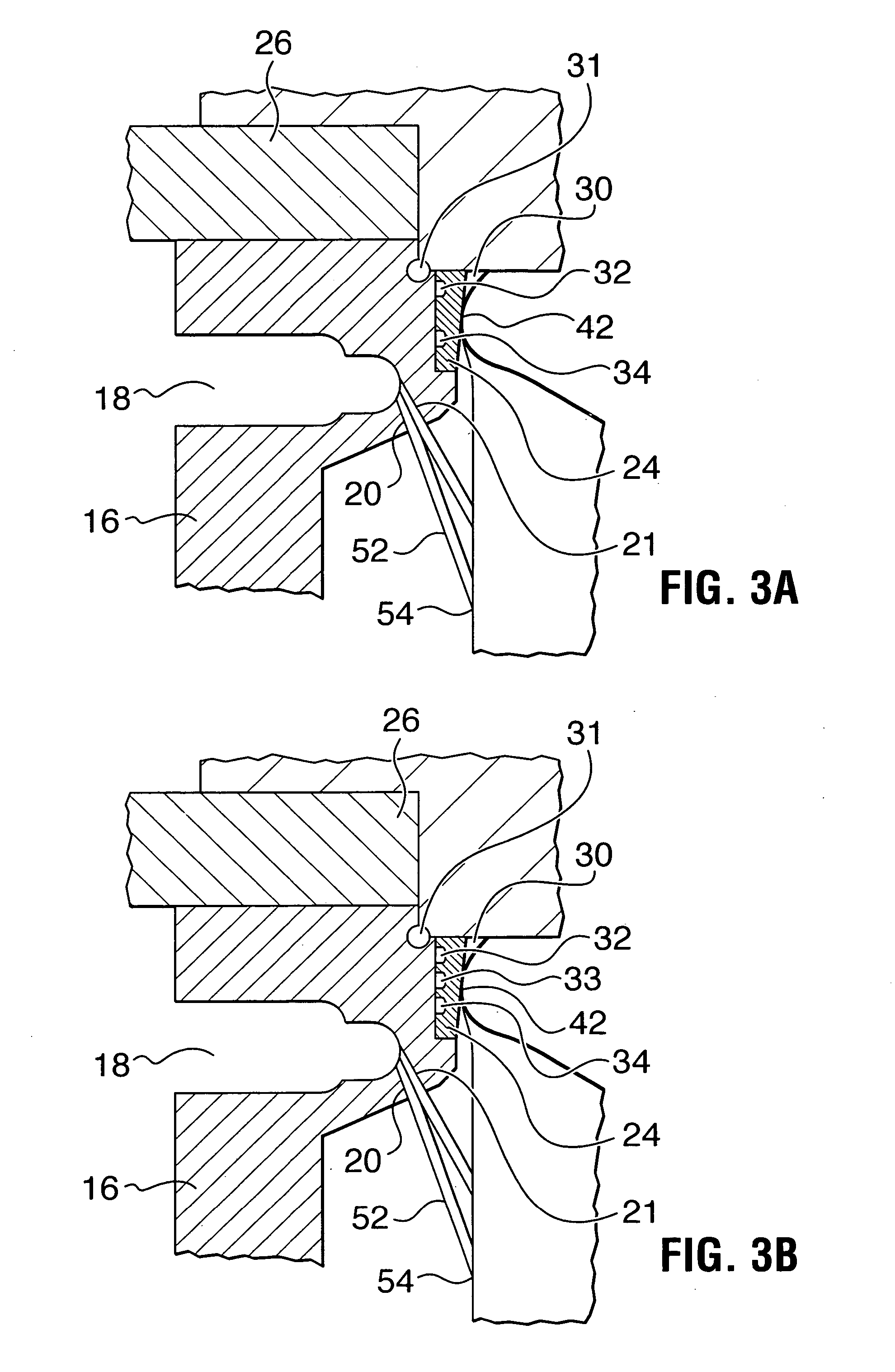Horizontal continuous casting of metals
- Summary
- Abstract
- Description
- Claims
- Application Information
AI Technical Summary
Benefits of technology
Problems solved by technology
Method used
Image
Examples
Embodiment Construction
[0035]FIG. 1 shows a typical horizontal casting mould of the type to which the present invention relates, including an insulated molten aluminum reservoir 10, an inlet trough 12 and a horizontal casting mould 11. An ingot 13 is delivered from the mould and is carried from the mould by a conveyor 14.
[0036] In FIG. 2 a two-part mould body 16, 17 is shown, in which is contained a water channels 18 fed by coolant delivery pipe (not shown) and communicating with a set of staggered coolant outlet holes 20, 21 around the periphery of the mould body.
[0037] A tapered permeable graphite annular ring 24 is mounted inside the mould body 16 so as to form an inner surface to the mould. A transition plate 26 formed from refractory material is mounted at the upstream. (or metal entry end) 28 of the mould. It has a smaller interior cross-sectional opening than the annular ring 24 thereby forming a shoulder and pocket 30 in the corner of the mould. An O-ring seal 31 is provided at the intersection ...
PUM
| Property | Measurement | Unit |
|---|---|---|
| Length | aaaaa | aaaaa |
| Fraction | aaaaa | aaaaa |
| Surface roughness | aaaaa | aaaaa |
Abstract
Description
Claims
Application Information
 Login to View More
Login to View More - R&D
- Intellectual Property
- Life Sciences
- Materials
- Tech Scout
- Unparalleled Data Quality
- Higher Quality Content
- 60% Fewer Hallucinations
Browse by: Latest US Patents, China's latest patents, Technical Efficacy Thesaurus, Application Domain, Technology Topic, Popular Technical Reports.
© 2025 PatSnap. All rights reserved.Legal|Privacy policy|Modern Slavery Act Transparency Statement|Sitemap|About US| Contact US: help@patsnap.com



